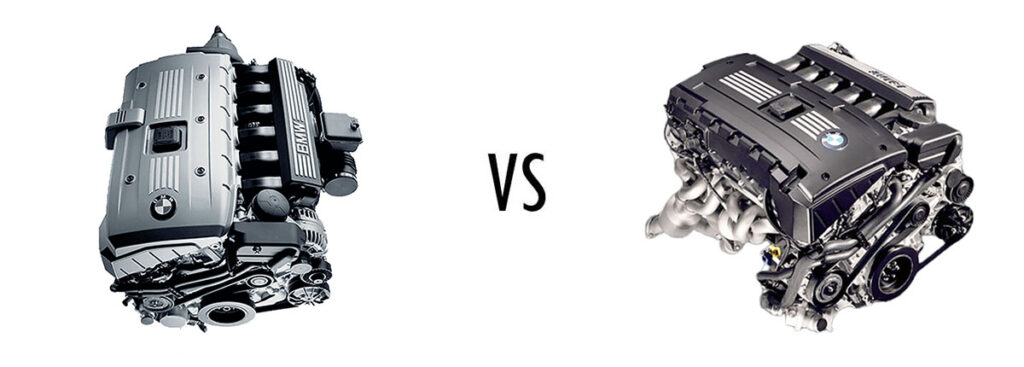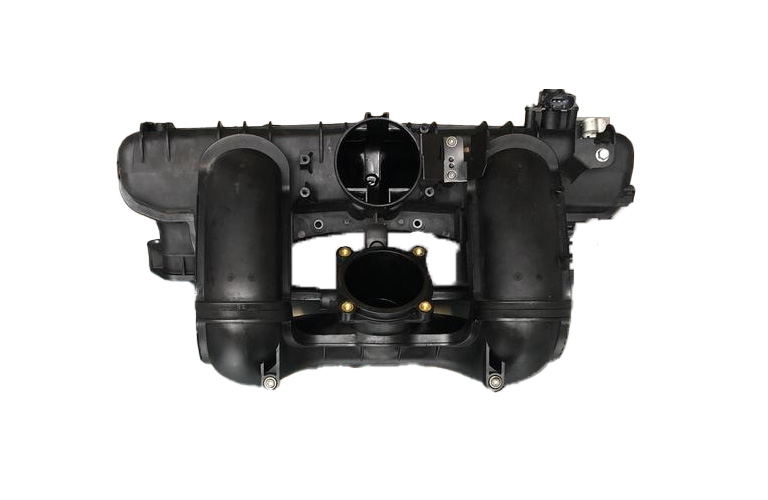The N52 and the N53 were the last ever naturally-aspirated inline-6 engines produced by BMW. While both engines are virtually identical, the N52 has port fuel injection while the N53 has a direct-injection system, similar to the one in the N54. This crucial difference makes them more distinct than you would expect.
How do both engines compare in terms of performance, reliability, tuning, and fuel efficiency? Here is a detailed technical comparison of the N52 vs. the N53.
BMW N52 vs. BMW N53 Specifications

| N52B30 | N53B30 | |
|---|---|---|
| Configuration | Inline-6 | Inline-6 |
| Displacement | 3.0 L | 3.0 L |
| Horsepower | 215–272 hp @ 6650 RPM | 201–268 hp @ 6700 RPM |
| Torque | 199–232 lb-ft @ 2750 RPM | 199–236 lb-ft @ 2,750-3,000 RPM |
| Fuel Injection | Port Injection | Direct Injection |
| Bore and Stroke | 85.0mm x 88.0mm | 85.0mm x 88.0mm |
| Redline | 7,000 RPM | 7,000 RPM |
| Compression Ratio | 10.7:1 | 11.0:1 |
| Years Produced | 2004–2015 | 2007–2014 |
N52 vs. N53: Overview & Design Differences
The N52 engine is the successor to the M54. It’s known for its use of a magnesium/aluminum composite, which helped reduce the engine’s weight. The N52 was a technological leap over its predecessor, incorporating Valvetronic and an electric water pump in an effort to increase efficiency.
On the other hand, the N53 was introduced later and is virtually identical to the N52 in terms of engine layout and engine block. The key difference lies in its direct injection system, mirroring the one found in the turbocharged N54. This change in the fuel injection system further improved engine efficiency and responsiveness. The N53 does not have Valvetronic.
N52 vs. N53: Horsepower, Torque & Power Delivery
Both the N52 and N53 have very similar horsepower and torque figures. The biggest difference between both is engine responsiveness, with the N53 having a better throttle response, especially at low RPMs.
The N52’s highest output version has a peak horsepower of 268 hp at 6,650 RPM, but most versions are de-tuned and don’t produce nearly as much power. The most powerful version of the N53 on the other hand produces a peak horsepower of 268 hp at 6,700 RPM, pretty much identical figure to the N52.
Despite the similar power figures, the N53 feels more powerful in real-world driving
The N52 engine’s peak torque of 232 lb-ft comes at a modest 2,750 RPM and remains almost constant up to the redline. Torque figures are also similar on the N53, with a peak of 236 lb-ft at 2,750-3,000 RPM, a marginal improvement over the N53.
Despite the very similar power figures, the N53 is the more powerful and responsive engine out of both, and this is particularly noticeable at low RPMs.
Winner: N53
N52 vs. N53: Reliability & Common Issues
Reliability is an area where simpler technology tends to win out. The N52 stands out with its less complex port injection system, making it slightly more reliable than the N53. Its common problems include leaks from the valve cover and oil filter housing gasket, clogged VANOS solenoids, and early water pump failure.
The N52 is more reliable due to its simple port injection system
The N53, while sharing most of the N52’s problems, can also have issues with its more complex direct injection system. These include failures of the high-pressure fuel pump (HPFP), injector failure, and carbon build-up problems. If you own an N53-powered BMW, at some point you’ll need a new HPFP and new injectors.
Neither engine is particularly problematic. The N52 is possibly the most reliable modern BMW engine and the N53 is almost as robust if you replace the injectors and the high-pressure fuel pump preventively.
Winner: N52
N52 vs. N53: Modifications & Tuning
In terms of tuning and modding for increased power, both the N52 and the N53 fall short of the mark. Their naturally-aspirated design limits the performance gains you can achieve with traditional bolt-on modifications.

De-tuned versions of the N52 and the N53 can benefit from an upgrade to the 3-stage DISA intake manifold present in the high-output version of the engines. BMW didn’t include this version of the intake in most N52s and N53s in an attempt to further differentiate between N52-powered BMWs like the 325i and 328i from N54-powered cars like the 335i. The good thing is that the 3-stage DISA is a bolt-on upgrade that can add 30-40 hp with its respective tune.
The N52 or the N53 are not particularly good for tuning
For serious power gains on either of these engines, you’ll have to opt for a forced induction conversion. A supercharger is the most viable way to upgrade these engines, as it’ll bump horsepower output significantly while preserving their linear power delivery.
A supercharged N52 can output up to ~500 hp with accompanying upgrades, but bringing either of these engines to that power level can cost you around $10,000 and you’ll need a skilled mechanic as well.
A supercharger kit is the best modification you can do for increased power, but it comes at a high cost
Modifying an N52 or N53 beyond the basic DISA intake upgrade does not make much economical sense, you’re better off getting a turbocharged BMW if you’re solely looking for straight-line power. However, a supercharged N52 or N53 is a true unicorn, and if you have the funds and the time you could build a truly unique car.
Winner: Tie
N52 vs. N53: Fuel Efficiency
When it comes to fuel efficiency, the N53 has an advantage over the N52 due to its more efficient direct injection system. The N52, with its simple and proven port injection system, isn’t quite as efficient but still delivers a respectable fuel economy for a 6-cylinder engine.
The N53 can achieve slightly higher MPG in similar driving scenarios. Expect the N53 to consume around 5% to 10% less fuel than the N52.
Winner: N53
N52 vs. N53: Pros & Cons
N52 Pros
- Simple and reliable engine
- Great exhaust sound
- Widely available in North America
N52 Cons
- Not the most responsive engine
- Fuel efficiency
N53 Pros
- Excellent fuel efficiency
- Engine responsiveness
- Widely available in Europe
N53 Cons
- The direct injection system is not as reliable
- Not available in North America
Summary & Conclusion: Which Engine Is Better?
The N53 is the direct-injected variant of the N52. Power output is similar but the N53 feels slightly more torquey and responsive. Reliability-wise the N52 wins out due to a simpler port injection system; the N53 will need full injector replacement at some point. The exhaust sound is very similar. The N53 wins out in terms of fuel efficiency.
If long-term reliability and low maintenance costs for a daily driver are your prime considerations, the N52 is the best choice with its simpler, proven technology. However, if you prioritize fuel efficiency, engine responsiveness, and the latest technology, the N53 could be more appealing.
Both engines are the last ever naturally-aspirated engines from BMW, bringing an era of NA inline-6 engines to an end. Although recent BMW engines like the B58TU are so impressive that it’s hard to cling onto naturally-aspirated engines, the N52 and the N53 will always be remembered as the end of a generation.

